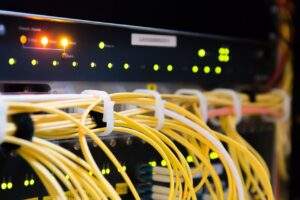How Electronic Access Control Systems Enhance Security in Orlando
A traditional key-based access control system requires each person to present a specific credential to gain entry. These credentials include a swipe card, RFID fob, or PIN code.
An access control system allows a centralized security office or manager to set rules and determine who can enter and when. It gives the business owner confidence that only authorized people are in and out of sensitive areas.
Restrict Entry to Specific Areas
While digital security protects information that can damage a company’s reputation or finances, physical access control systems safeguard equipment and products in a much more tangible way. Employees and visitors who aren’t authorized to enter certain areas will be kept out of server rooms, laboratory spaces, and other high-security areas that could pose a risk of theft or harm.
Commercial door access control systems are flexible enough to allow different levels of security based on the unique needs of a business. A facility manager can set rules that grant access based on an employee’s job title, or they can choose to limit access based on the time of day.
It’s also easy to revoke access for a lost or stolen credential. You won’t have to worry about unauthorized employees using their access cards to sneak into sensitive areas, as all entry data will be recorded and accessible. Establishing a protocol for using this data can help you find trends or potential issues before they become problems.
Monitor Entry to the Building
When employees work varying shifts, an electronic access control systems Orlando helps keep track of their comings and goings without supervisors needing to stay late to lock up. It saves money and frees up time for managers to monitor other aspects of business.
The system works with credentials that the authorized user carries, physically or digitally, such as a key card, PIN, mobile device pass, fingerprint, or other method. When the credentials are presented at the entrance, the access control unit allows entry or denies it, depending on the credential’s validity.
Businesses that operate multiple locations can also use an access control system to manage security based on site. For example, hospitals with two campuses can create security policies to match at both locations. It is an advantage over a traditional key-based system that requires one lock per entrance and can be complicated in large organizations with multiple locations.
Prevent Unauthorized Access
Deploying an access control system involves a lot of planning. You need to identify the specific individual and group-level access types you’ll need. You’ll also need to determine where different components, like readers and access panels, must be located at each control point.
Then, you’ll need to set your permission settings based on shifts, ranks or job titles, and time of day. It makes it easier for employees to get where they need to be at all times while keeping unauthorized people out.
Electronic logging provides a more granular level of detail than traditional methods. It eliminates the need for security officers on-site to verify every entry or issue alert when there is a failure. For example, suppose a staff member with elevated access loses their swipe card. In that case, it takes seconds to flag and deactivate that user’s account in your management portal and send an immediate alert to security personnel.
Keep Track of Who is Entering the Building
Modern access control systems can keep track of who is coming and going. They can automatically log every entry, so you know who entered and when. They also make it easy to review security reports. It gives you the data to see if any behavior patterns could indicate suspicious activity.
Contemporary access control systems often employ individual, role-based, and department-level access permissions. You can assign specific credentials to employees, like a proximity card, pin code, or biometric reader. You can then change their level of access based on shifts or time of day and revoke their passport when they leave the building.
You can also use a control portal to manage the system remotely. It allows you to change access levels, temporarily unlock doors for contractors and suppliers, add and remove credentials, print security reports, and more. It makes managing access for your staff and visitors easier, especially when you need to respond quickly to an emergency.






